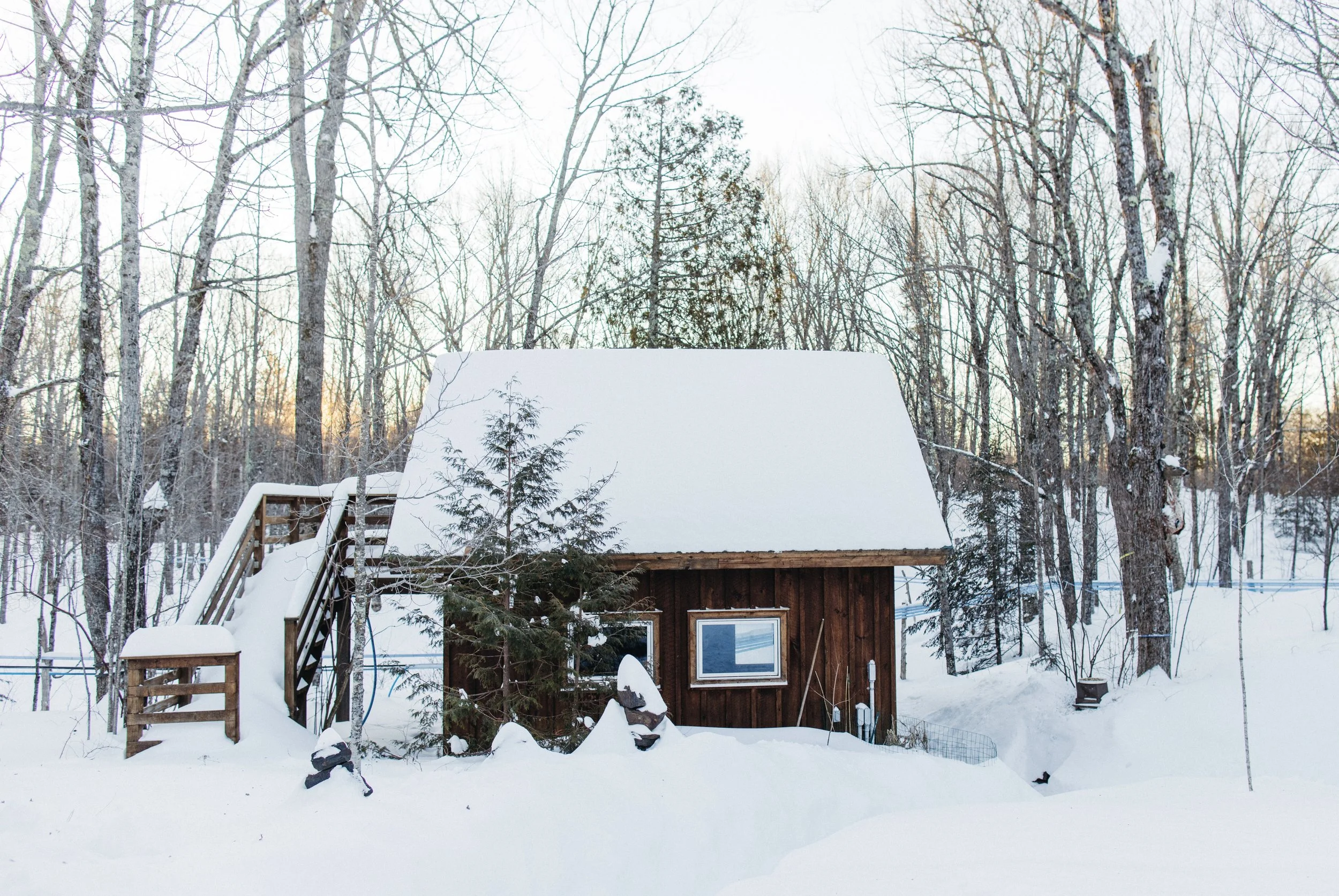Our 2025 season
The maple trees were happy this spring - producing 1103 gallons of beautiful maple syrup. This was possible thanks to our friends who helped with everything from tapping to bottling. We hope you enjoy this bountiful harvest!

all about maple syrup
-
Maple syrup can be stored at room temperature; however, once it is opened, it should be refrigerated. For longer storage, keep your syrup in a cool, dark place.
-
Maple syrup is graded according to color. The lighter the syrup, the higher the grade. Color and flavor are a matter of preference.
Grade A
Light Amber - light in color, delicate maple flavor due to an increase in sugar associated with cold temperatures, first syrup of the season
Medium Amber - more color and flavor, produced in mid-season, most popular grade
Dark Amber - darker in color, stronger robust flavor as a result of a decrease in sugar in the tree and warmer temperatures, produced in late season
Grade B
Dark color, a sharper maple flavor. Used in cooking/baking
-
During the evaporation process, the only thing that has been removed from our pure maple syrup is water. The vitamins and minerals remain. There are no additives or preservatives, making it 100 percent natural.
Vitamins - B2 Riboflavin, B5 Pantothenic Acid, B6 Pyridoxine, PP Niacin, Folic Acid
Minerals - calcium, potassium, manganese, magnesium, phosphorus, iron
Sugars - sucrose is the main sugar in maple syrup
-
We advocate using it in pretty much everything, including in…
Your favorite beverage - milk, milkshakes, coffee, tea
Hot or cold cereals
Jams, sauces, jellies
On pancakes, waffles, french toast, lefse, crescent rolls
Baking - in your favorite bread, cookie, pie recipe
Over salmon, halibut, or any other favorite meat
-
Serving Size: 4 Tbsp 1/4 cup (60 ml)
Amount Per Serving
Calories 160
% Daily Value*
Total Fat 0g 0%
Sodium 7mg 0%
Total Carbohydrate 53 g 18%
Sugars 53 g
Protein 0 g 0%
* Percent Daily Values are based on a 2,000 calorie diet
Potassium 150mg, Calcium 8%, Iron 8%
A Minnesota Maple Season
-

The Season Begins
In Northern Minnesota, the normal maple season runs 4 to 6 weeks, generally in the months of March and April. Production varies annually with weather playing a key role. Sap starts to flow when temperatures rise above the freezing point during the day and drop below it at night. A suitable temperature cycle of above and below freezing must continue for the "run" to be underway.
-

Collecting the Sap
Depending on a tree's size, it can have up to four taps. The sap runs from each tree through a tubing system. A pump is used to create a partial vacuum in the lines, which brings the sap to the pump house where it is kept in a storage tank until it can go through the evaporation process.
-

From Sap to Syrup
The evaporator is a stainless steel pan (4 ft wide by 12 ft long). Cold sap enters at one end and exits as syrup at the other end. Through the evaporation process, the sap is concentrated from two percent sugar to 67 percent. The color and flavor develop as a result of chemical reactions from the length of heating. The long sap is boiled, the darker it becomes. It takes approximately 40 gallons of sap to produce one gallon of syrup. Maple syrup is drawn out of the evaporator when the syrup reaches 7.5 degrees above the boiling point.

Legend has it that Native Americans discovered sap from maple trees could be processed into maple syrup when a tomahawk was hurled into a tree and sap began to flow. The clear liquid was put into a container and taken home. Later, it was mistaken for water and used in venison preparation. It was found to be delicious and, after retracing how this occurred, they realized they had used maple sap.
-The History of Maple Syrup
